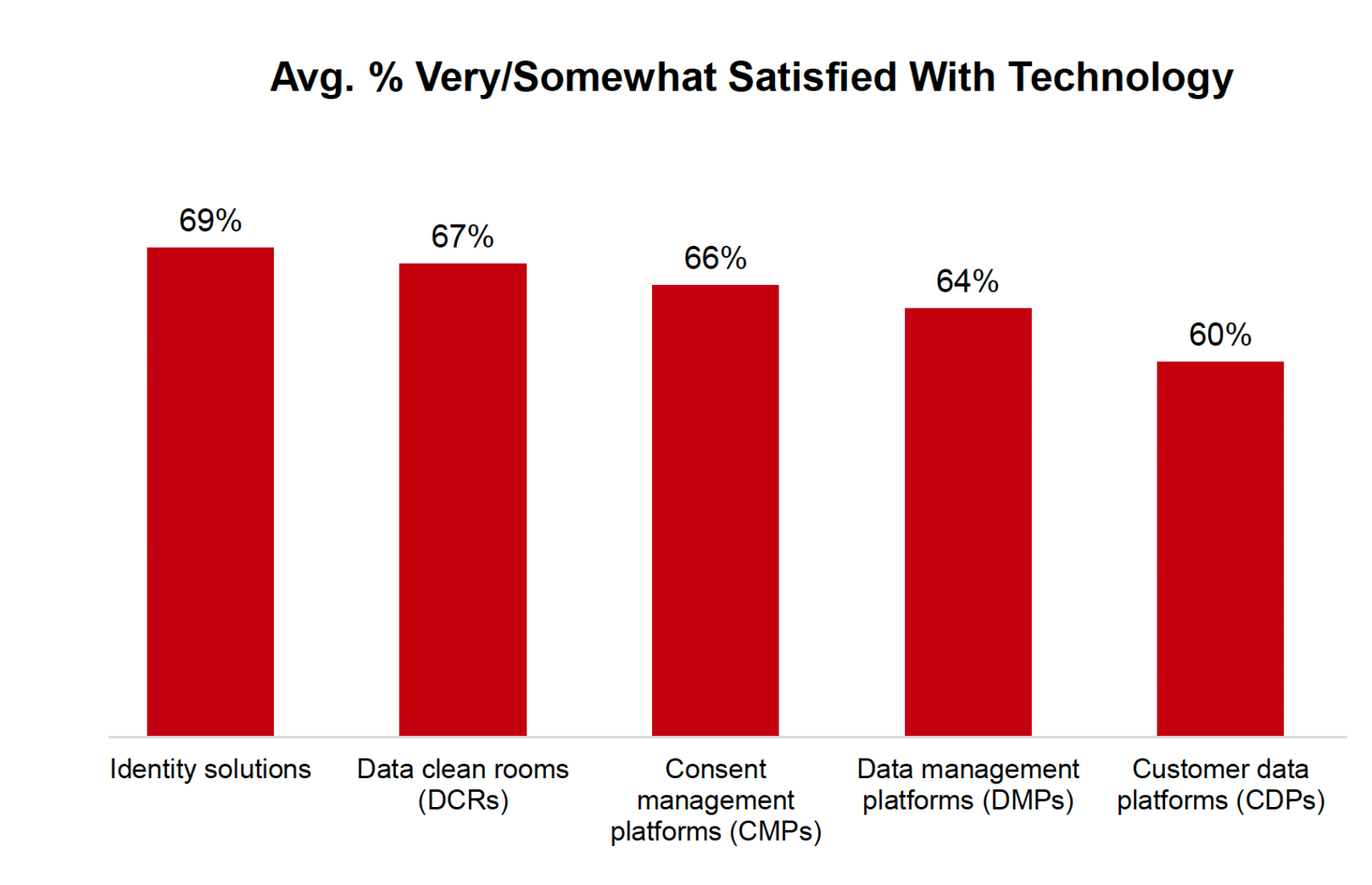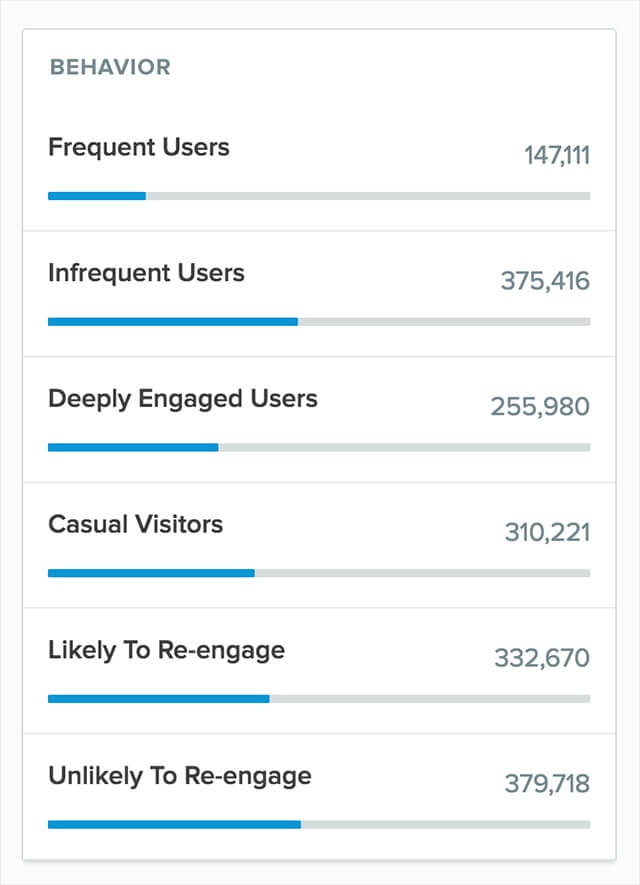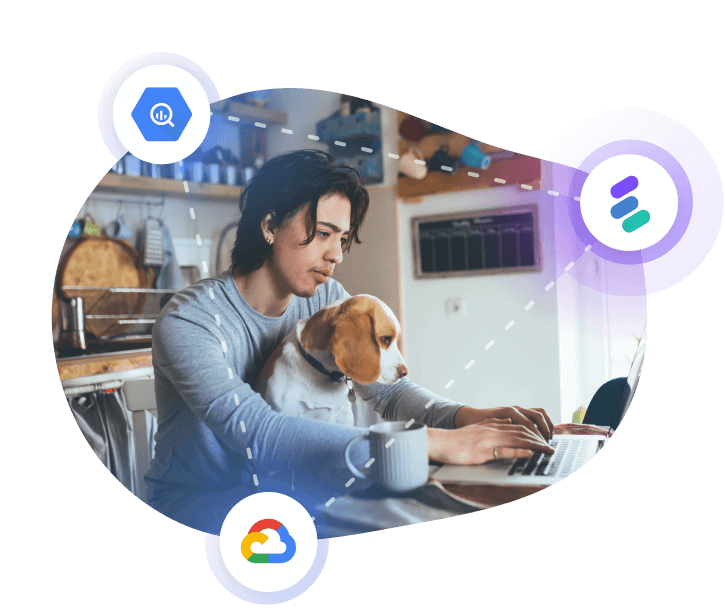Next-gen CDPs explained: Leading with customers, control & compliance
April 30, 2023

Is your customer data platform (CDP) doing all that you need it to, especially as we approach a more challenging privacy and regulatory landscape?
For many of you, the answer is an emphatic “no.” However, today, there is a new generation of CDPs that deliver on what customers need the most. These next-generation CDPs are built with end users in mind and solve the problems that have plagued legacy CDP systems.
The next-gen CDP opportunity
With next-gen CDPs, brands can understand their customers better and customer behaviors. They can drive better decision-making and outcomes. Next-gen CDPs also provide more granular insights, allowing organizations to personalize their marketing campaigns, improve customer engagement and loyalty and optimize operations. At the same time, better CDPs help organizations comply with an ever-expanding list of data protection and privacy regulations all while maintaining control over their data.
At Lytics, we believe that the future of CDP is composable (i.e. you can buy the parts of the CDP that you need for your organization, or you can buy the whole package).
Next-generation CDPs have several important benefits for customers, including:
- Managing your data foundation
- Ensuring compliance in an ever-changing regulatory landscape
- Enriching and uncovering data insights
- Activating their customer data
Many users are dissatisfied with their outdated CDP technology, according to IAB’s State of Data 2023 Report. There’s a significant disconnect when it comes to promise versus value, coming in large part from a lack of data visibility, flexibility and agility in the existing offerings.

To support these businesses, we recently hosted a webinar (which you can now watch on-demand) explaining the value and importance of embracing a next-gen CDP solution. Among our insights?
- Next-gen CDPs provide marketing leaders to more quickly and intuitively see patterns and opportunities in their data.
- They can use predictive analytics to unlock new potential, new markets and new customers via unique channels.
- Next-gen CDPs also allow marketing leaders to use real-time data to spot trends and anticipate consumer behaviors all while keeping data native to wherever it’s stored.
And although the opportunities are endless, taking the road less traveled comes with its challenges as well.
Addressing common challenges of legacy CDPs
Traditional CDPs have many challenges. The first is that they are massive, monolithic applications. They also frequently are designed to copy data from other sources and import it into the CDP, and that process is a major security compliance issue.
With multiple copies of data in existence, there’s an increased risk of errors due to duplication. Because the applications are so large, the time it takes to deploy these systems is extensive, often taking six months or more. It slows the time to value and can lower the return on investment. They usually are intensive from a resource perspective, too, requiring massive commitments of time and personnel.
Other challenges to using a traditional CDP are:
- Lack of clarity as to who the system owner is, whether it’s IT, marketing or the developer
- Challenges in unifying data in a cohesive model. Older CDPs cannot create schema across the CDP itself, in-house data warehouses and other systems
- Integrations and connections to other data sources, while valuable, may result in additional charges for data storage, processing and warehousing. Often, these additional connections go unused
- When all data cannot be stored in the CDP, there’s wasted resources on the cost of additional database models to store customer information
- A poor fit with organizational workflows, resulting in added complexity, additional costs and time to build and maintain customized solutions or workarounds.
So, what’s the solution? Ensuring adaptability in culture, in processes, and in technology solutions.
Exploring new and innovative use cases for next-gen CDPs
At Lytics, we’ve seen customers using the next generation of CDPs, including Lytics CDP, in a variety of fresh and innovative ways. Many of these use cases revolve around the proliferation of data from more and more diverse sources, in particular.
“Lately, we’ve been seeing marketing leaders making use of many more channels, and those channels tend to be very, very unique. So next-gen CDPs need to be very adaptive and support different ways to integrate. Regardless of nuances across organizations and industries, it’s key that a [future-ready] CDP is able to improve marketing strategies, achieve better customer engagement, and comply with different privacy and security regulations.” shared Evan Bench, Lytics’ Manager of Professional Services, during our webinar.
Here are some of the most powerful uses for Lytics CDP.
1. Smarter, context- and intent-based personalization
Bench noted that next-gen CDPs allow marketers to quickly create highly personalized campaigns. Data can be collected from multiple offline and online sources, then stitched together using real-time ID resolution strategies that factor in consumers using multiple devices. First- and second-party data sourced in different ways is connected to consumer preferences to deliver targeted content or products based on user affinities and behavioral insights, not just demographics.

This content can be delivered across multiple, unique channels, including home technologies like smart TVs, airport and hotel TVs, retail displays, digital kiosks, and in-app ads.
2. Predictive analytics, powered by data science
Today’s next-gen CDPs can leverage data science to boost brand insights. The newer CDPs can analyze vast amounts of data to predict consumer behavior and future trends. These analyses help marketing leaders to make better decisions on pricing, price sensitivity, product development, the impact of geopolitical change, and even the impact of weather on consumer behavior.
3. Informed affiliate, partner, and influencer marketing
Affiliate partners and influencers are a huge market for brands. Traditionally, influencers have been used in a limited number of industries, including retail, hospitality and beauty. Today, however, an increasing number of brands in travel, leisure, food and drink are turning to paid and unpaid influencer marketing to spread awareness and generate revenue — many armed with a powerful CDP as the driver of their data-informed marketing decisions.
Why next-gen CDPs are a better solution for privacy and compliance
Next-gen CDPs are built with privacy and security in mind. Generally, data are left in place, with pointers to relevant data used instead, sometimes down to the field level. This approach reduces costs while also providing better privacy and security.

Permissions can be applied to resources based on roles and shared selectively. The modern CDP acts as both a data warehouse and a data hub, while reducing the risk for data loss due to a breach. They also ensure compliance and promote efficient data management. Encryption, adherence with industry security standards and access controls also ensure that the next-gen CDP ensure that client compliance is at the forefront.
If you’re thinking about investing in a future-ready CDP solution, here are some consideration to keep in mind:
Prioritize data flexibility and agility
Brands today operate in a complex world. There may be sub-brands all within the same umbrella. Brands operate in multiple regions, or all regions, of the world. That complexity leads to many questions when it comes to deploying a CDP solution. So, there needs to be agility and flexibility built into the architecture that underpins data management. Austin Wenzel, Account Manager at Lytics, shared:
“When you think about CDP 2.0, or next-gen CDPs, it really is about how we productize that data that’s sitting in your data warehouse, and make it usable by other teams across the organization. It’s about how we can do that quickly, and about asking: how do we get lasting value out of it to drive positive business outcomes?”
Part of the Lytics data strategy is to create pre-built connections to get the Lytics CDP launched quickly, integrated seamlessly with other systems and end-use applications. The approach leverages the latest in data science, machine learning and artificial intelligence to create the most advanced CDP available. As a result, Lytics clients can reduce costs, increase revenue and reduce risk simultaneously.
Address the “build or buy” question
In recent years, the CDP industry has faced several core challenges – the elimination of third-party cookies and increased regulation. The result has been products like Lytics CDP, which offer sophisticated solutions that address data privacy and personalization, all while leveraging data from disparate sources. However, many organizations still deploy a build and buy approach, combining custom-built data warehouses with off-the-shelf products.
Building your own CDP is not a good investment, given the ever-changing data and privacy landscapes. It also often fails to solve one of the most critical needs marketers have today: speed. Marketers need sophisticated segments quickly. However, using outdated or in-house systems can often result in significant lags. Marketers ask the IT or engineering team for a specific, complex segment. Then it takes days, weeks or months to deliver that segment, often too late for marketing needs.
Wenzel noted that he frequently sees the challenges of those who go it on their own:
“I’ve worked with some of the biggest brands in the world that have tried to build CDP in house — and many come back after a couple years and realize, ‘Hey, we didn’t think of this’ or ‘We’re not really successful with it yet and we want to talk to you about how we use your product to help fill out some of the gaps we missed.”
Fortunately, with next-gen CDPs like Lytics CDP, more functionality is self-service, meaning those marketing teams can build their own segments and deploy them quickly. At the same time, data remains where it’s stored, safe, secure and compliant.
Don’t forget the marketing use cases for CDP
What can marketers do with a compliant, user-friendly, self-service CDP? If you think this kind of solution is only a fit for technical and data teams, think again.
Marketers often have significant demands for results. They need to build ad hoc campaigns that use specific, non-routine first- and second-party data sources. They have to deliver campaigns via unique challenges or via contractual partnerships with agencies. In addition, there’s more interest in developing partnerships across brands.
The result is the need for more composable CDPs that need certain components to deliver. Some Lytics clients, for example, only need marketing pipeline management. Others focus only on orchestration. With a composable CDP, brands can buy only what they need and mix and match as circumstances emerge.
Lytics offers three core CDP services:
- Conductor. Our CDI tool lets you build unified, reliable and actionable profiles, plus manage your pipeline, schema, and customer identities.
- Cloud Connect. Our Reverse ETL tool lets you take customer data directly from your data warehouse to build highly specific segments for use downstream in email campaigns, social media ad campaigns and CRMs for additional customization or outreach.
- Decision Engine. Our data activation and smart decisioning tool enables integrations with hundreds of popular applications.
Lytics CDP helps brands become more agile and flexible in their use of data, using the most modern technologies to leverage the capabilities of what’s hidden in the vast array of information about consumers. Lytics next-gen CDP does all of that while ensuring data is protected and meets regulatory requirements. To learn more about Lytics CDP can do, watch the on-demand webinar in full.



